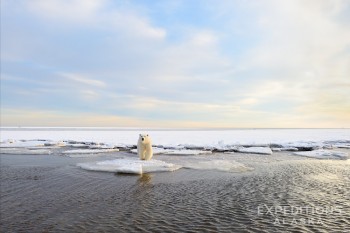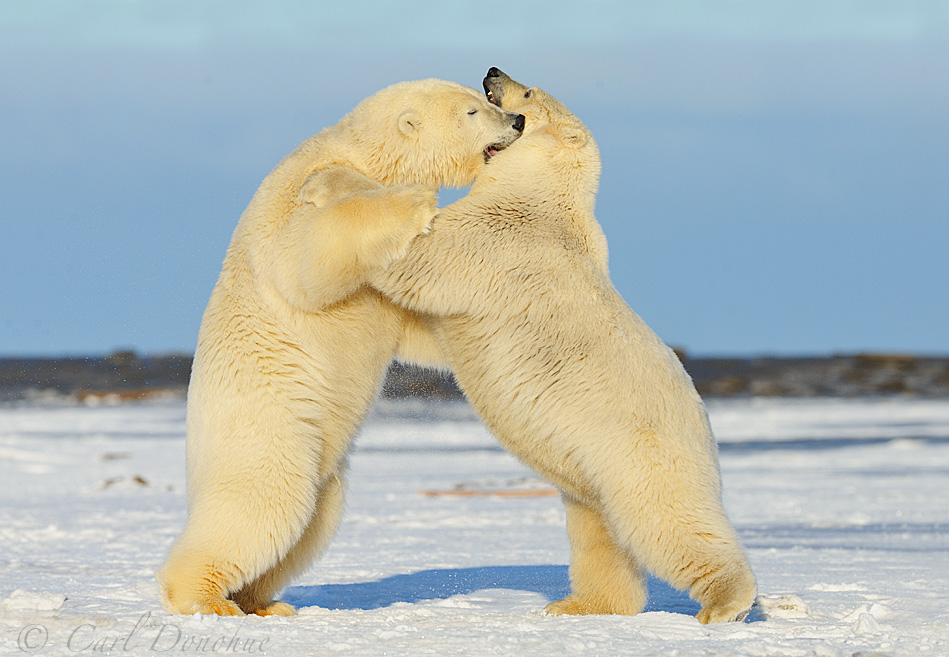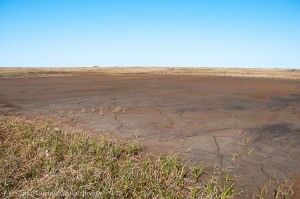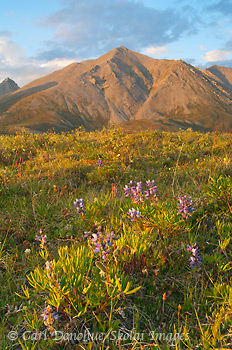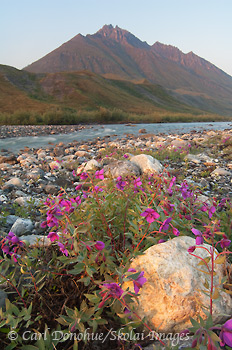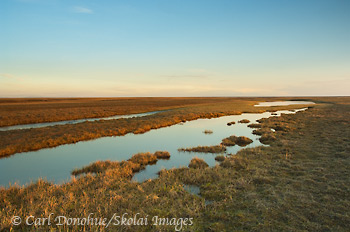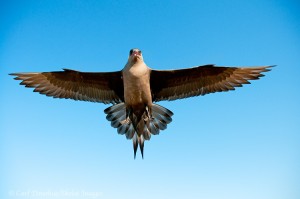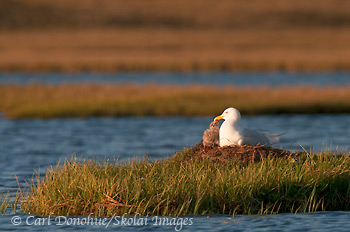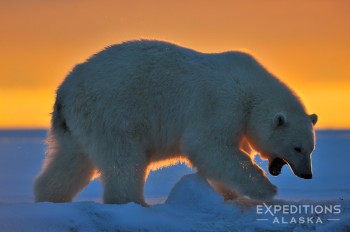
A young polar bear on the prowl, silhouetted against a colorful sunrise, on the frozen ground of the Arctic National Wildlife Refuge (ANWR), Alaska. Polar bear, Ursus maritimus, Alaska. Please click on the image above to view a larger version of this photo.
Hey Folks,
Everyone loves a great sunrise or sunset, right? And everyone loves polar bears; seriously, does anyone NOT love polar bears? So who loves the 2 together?
We set out this morning with high hopes, clear skies and the beginning of color on the horizon. Everyone hoped for a nice sky and some polar bear activity. Hoping, and getting are two different things.
So how does it play out? The sunrise turned out to be, in a word, spectacular. The morning itself, frustrating.
We found some polar bears relatively soon, but they weren’t really in a great location. On top of that, they were asleep. certainly, polar bears are so photogenic that even asleep, they make a great subject. But they were sleeping just below a short embankment, with the colorful sky above and beyond and so we couldn’t find a way to really make it work. One option might have been to shoot multiple exposures, steadily, and then blend the 2 together to properly capture detail in the foreground and the background. I shot a couple of images like this, but even as I was photographing, I knew it wasn’t really happening. OK stuff, but nothing grand. Continue reading
